Why you should read this article: You get an overview on whats possible with bioprinting, find out more about the most promising companies - and what lies beyond the hype.
3D bioprinting – often referred to as “bioprinting” – is the process that allows scientists to generate and assemble cellular layers to form organic tissues. While scientist already use 3D printing process to create custom implants and prosthesis in polymeric or metal materials, bioprinting implies the use of organic materials, thus the tissues and organs that are created are considered to be both biological and artificial. Or “bioficial”.
Direct Organ Manufacturing
For simpler organs such as bladders, or cartilaginous structures such as ears or the trachea, 3D bioprinting uses a “scaffold” designed in CAD and then 3D printed to shape the organ, using a biocompatible material. Scientists then manually deposit a “bioink” (made up of the organ’s cells or stem cells in the form of a hydrogel) to fill and cover the artificial structure, which then dissolves leaving just the organic tissues.
In the case of more complex organs that consist of many different cells, such as liver, heart or kidneys, this method is not always applicable. In the future scientists will need to 3D print cellular fabrics and scaffolds directly and simultaneously in 3D. They will adopt a process similar to regular 2D inkjet printing. As bioink the the bioprinter will use hydrogel formed by different types of cells and distributed by multiple syringes. These are deposited in two-dimensional multicellular strips forming the different combinations of cells and capillaries. The “biological” strips that form the layers of the organ are then assembled one on top of the other to make up the 3D structure.
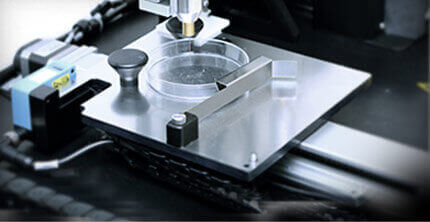
Tissue supermarket
While 3D bioprinting is being studied and developed in many of the world’s top universities and research institutions, there are already a few companies that are trying to create the first commercial bioprinted products. In the beginning these will be small implants to regenerate bone or cartilage but everyone’s hope is that the rapid evolution of technology will enable us to create functioning organs, such as skin or even kidneys, in a future not too far away.

The first company to 3D print a blood vessel is Organovo, which developed its own bioprinter and is working at a commercial, 3D printed liver tissue. Another company, EnvisionTEC, specializes in resin based DLP 3D printers and has already ventured into producing a commercial bioplotter (which is basically the same as a bioprinter) and a low-cost “developer” version for universities.
Their short-term goal is to 3D print in 3D increasingly accurate artificial versions of organic tissues such as skin, liver or heart to test new drugs but there is no hiding that the long term dream is to be able to create entire organs. The main difficulty when it comes to printing complete organs is that they are made up of a multitude of different cells. Just like in the 3D printing of real functional objects, it will be necessary to develop technologies that can print simultaneously with different materials.
A capillary research
Moreover, since the organic tissues are printed in the form of two-dimensional layers, when they are assembled to form the three-dimensional structure, the inner layers can not get the oxygen they need to survive. Vascularization, that is the presence of microscopic blood vessels, is necessary for the blood to carry oxygen to all parts of the artificial organ.
This issue was partially resolved in the beginning of 2014 by Dr. Jennifer A. Lewis of the Harvard School of Engineering and Applied Sciences (SEAS). Her team developed a method for creating the complex vascular structures withing the tissues by using a material which dissolves as the structure’s temperature cools down, leaving behind the capillary veins.
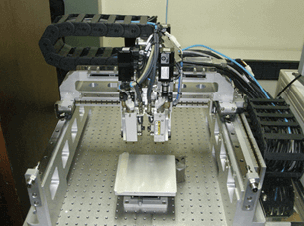
Molecular recipies
To 3D print organs and tissues, scientists use materials called bioinks which are gelatinous hydrogel composed of living cells. Mixed with agents such as, for example, alginate (Alg-Gel), also used in molecular cooking, the hydrogels remain in a gelatinous form during the 3D printing and then harden when they cool down or when they are irradiated by UV light, according to a process first introduced by the Fraunhofer Institute in Stuttgart in 2012. The cells that form the hydrogels are then “programmed” to form the type of cells that make up the desired tissue.
While bioprinting research is moving at a breakneck speed, in top facilities such as the above mentioned Fraunhofer and Harvard lab, or the Utrech Biofabrication Facility and in South Korea’s Postech’s IMS Lab, real progress, intended as something that anyone can benefit from, will take a really long time. No one can say when (or even if) we will truly be able to ever 3D print a fully functioning complex organ but some are more optimistic than others.

On the way in 2015
A Russian start-up, 3D Bioprinting Solutions, based in the Skolkovo Research center, is among them. After lanching its own 3D printer, the company said they will be able to 3D print a functioning bladder by the end of 2015 and hopes to achieve a full 3D printed kidney within a little more than a decade. While these goals may be even a little too optimistic, there is a Swiss company called RegenHU that is close to taking the very first bioficial implant to market: Osteoflux.
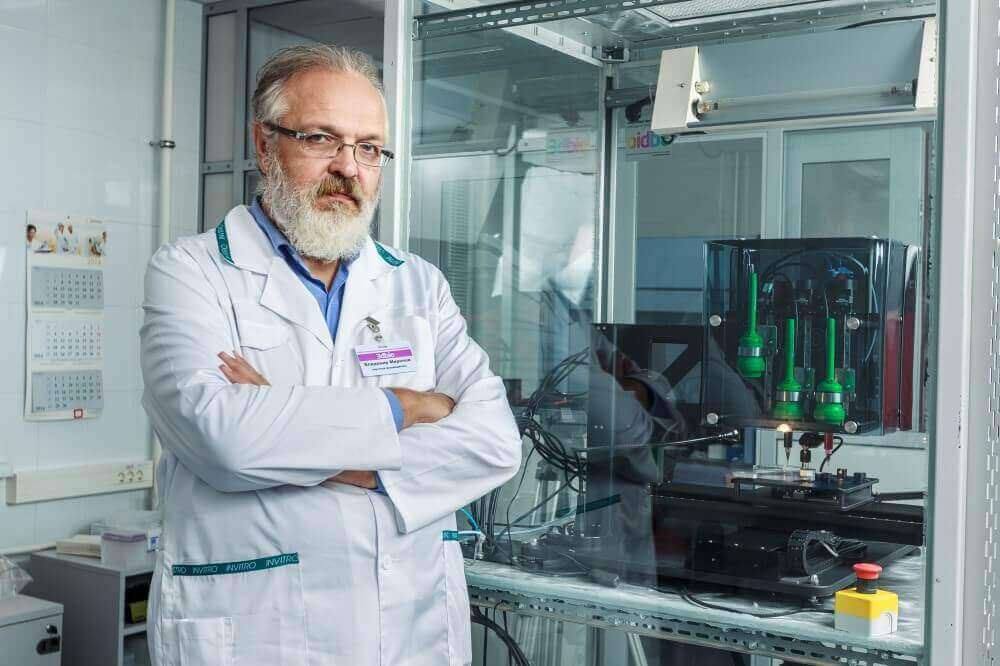
RegenHU produced two commercial bioprintiners as well as the Bioink and Osteoink to use them with. Osteoflux is synthetic bone grafting material used to augment the jaw bone volume in order to provide enough mechanical stability to support a dental implant. It looks like a small sugar cube but if approved it might become the very first 3D bioprinted implant you (or actually your dentist) can buy.
Never too soon
The next step should be cartilage and cartilagineous structure to rebuild the knew or the trachea, with vertebrae due later on down the line. Cartilage is the best candidate because it is made up of a single type of cell and has a stratified structure which is ideal for additive manufacturing. Nevertheless there still are many difficulties: the first is finding the correct density (neither too stiff nor too soft) to enable functionality; the second is making sure the bioficial material is not rejected by the patient’s body.
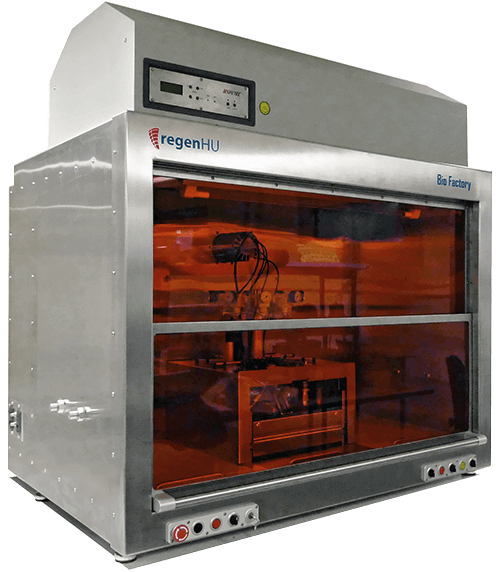
Even if the research underway in this field yields the desired results, we may be looking at the commercial availability of 3D printed cartilage reconstruction no earlier than 2025. That’s because extensive testing will be required and regulations are not yet clear on whether a bioficial implant is considered an prosthesis or a medicine. In the first case regulations are extremely simple, in the latter they are extremely complex.
Jump to the future
Bone and early versions of bioficial skin would be the next in line, possibly becoming available between 2030 and 2050. Among complex organs, hearts may be somewhat easier to achieve, since it may be sufficient to replicate only the faulty valves and ventricles to regenerate a faulty one. Other organs such as liver and kidneys, will likely require a significant jump in the manufacturing technology.
Many scientists today do not believe it will ever be possible to replicate the cellular structure of a kidney or a liver. It may be possible to do it through an advanced multi-axis additive manufacturing system, capable of placing each single cell in its desired position. It would be a system somewhat similar to that envisioned by movie director Luc Besson for reconstructing the character played by Milla Jovovich in The Fifth Element.
That story takes place in 2263. Hopefully it will happen somewhat sooner.
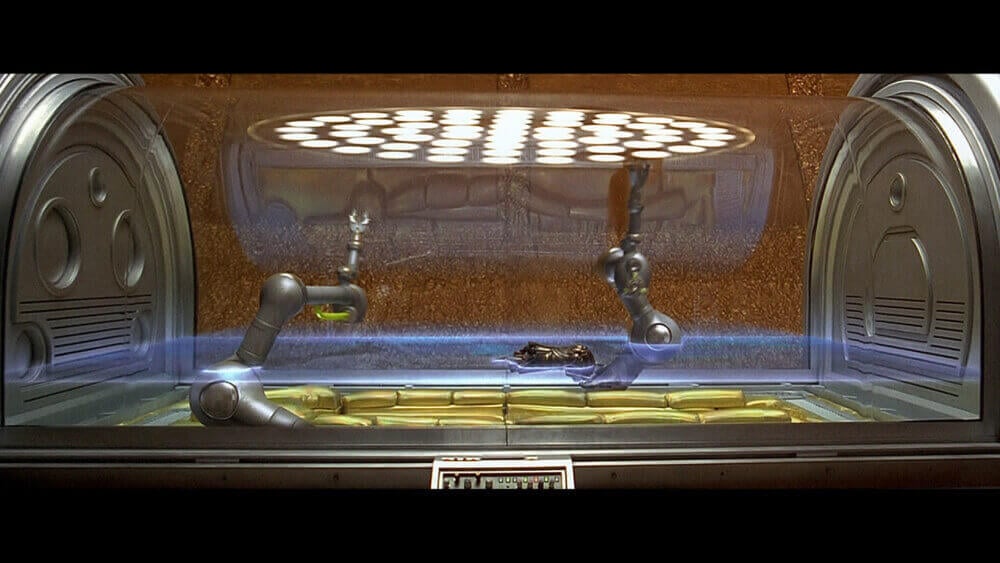
License: The text of "3D Bioprinting: A Brief Introduction" by All3DP is licensed under a Creative Commons Attribution 4.0 International License.